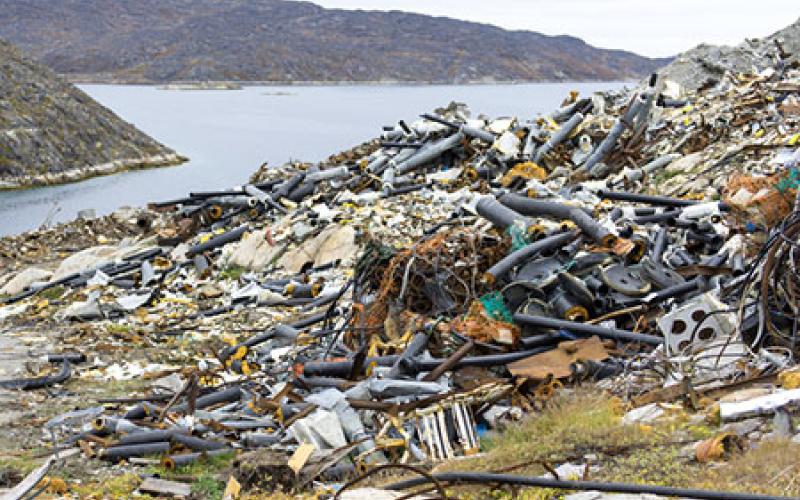Future scenarios for waste generation: Is a peak coming?

Future scenarios for waste generation: Is a peak coming?
Monitoring global waste generation might help estimate when we might see a peak in waste generation and how this problem should be addressed.
Original Paper:
Hoornweg, D., Bhada-Tata, P. and Kennedy, C. (2015), "Peak Waste: When Is It Likely to Occur?" Journal of Industrial Ecology, 19: 117–128. DOI: http://dx.doi.org/10.1111/jiec.12165
When it comes to assessing the environmental impact of modern societies, municipal solid waste (MSW) might represent just the tip of an iceberg. On average, it represents less than 5 percent of a product's environmental impacts, with other significant impacts occuring during the manufacture-and-use phase. However, MSW can be the easiest way to assess those societies' economic performance. Since it clearly shows the impacts of material-based consumption around the world, monitoring how nations generate solid waste can help create an estimate of overall global impacts from consumption of resources and energy. Waste generation is expected to gradually decline in industrialized and high-income countries due to more sustainable practices. On the other hand, countries undergoing fast urbanization trends — such as China — generate higher amounts of solid waste (2 kilograms-per-capita-per-day).
In a recent publication of the Journal of Industrial Ecology,a group of researchers – led by Daniel Hoornweg from the University of Ontario, Institute of Technology – analyzed the global trends of solid waste generation. They attempted to estimate when a possible peak might happen. In the long term, several factors are related and need to be considered, such as growing global population, urbanization, and affluence. The varying patterns of economic development across nations are also very important.
The authors focused on three factors: total and urban populations, historical solid waste generation rates calculated by the World Bank, and GDP for the 34 member countries of the Organization for Economic Co-operation and Development countries. Each factor was evaluated under three different socioeconomic pathway scenarios (SSP); sustainability (SSP1), business as usual (SSP2), and fragmentation (SSP3). Sustainability describes a pathway with less resource consumption and lower fossil fuel dependence as well as a population of less than 7 billion and declining by the year 2100. Business-as-usual describes a middle of the road pathway, where current trends continue and the population reaches 9.5 billion, declining by 2100. The fragmentation pathway is the worst-case scenario, where regions of extreme poverty and pockets of wealth sum up to a population greater than 13.5 billion and growing under declining living standards.
Based on the sustainable pathway, peak waste would be moved forward and would be reduced in its intensity. However, from the evidence of increasing greenhouse gas emissions and waste volumes, the business-as-usual and fragmentation scenarios are more likely. There are two factors of the waste generation that seem to contradict each other. At first, countries are assumed to increase waste generation as affluence increases. But on the other hand, changes in technology and consumer behavior tend to reduce waste generation over time.
The waste projections for the three scenarios were similar (less than 5-percent difference) until the year 2050 when they start to divert. From there the difference increases significantly starting the year 2075 and beyond. The scale of expected waste increase is alarming; by 2100, the difference between waste generated between the fragmentation and sustainability scenarios can be compared to the present amount of global waste generation. It is crucial for waste planners and global public policy decision makers to anticipate that, by 2100, solid waste generation will be three times greater than today.
A central idea for all scenarios is the understanding that poverty alleviation and environmental sustainability are intrinsically connected. The article highlights that, like education, urbanization can be an important force to reduce poverty. A consequence of poverty reduction efforts will be higher solid waste generation. It is also is necessary to look at regional differences.
Today, waste-generation rates in wealthy countries are four times higher than in other regions like Sub-Saharan Africa. The per capita rates (per region) are predicted to merge toward a common value closer to 2100. The main factor driving the date and intensity of peak waste is Africa's urbanization after 2050.
The authors call attention to the role that industrial ecology plays in transforming global society towards making better use of resources and mitigating waste. The global waste problem presents an opportunity to utilize many lessons from industrial ecology. For instance, technological advances and changes in consumer behavior, especially in cities, can reduce the intensity of peak waste. One specific strategy that they pointed out was improved construction processes that create more efficient buildings and recycle materials.




